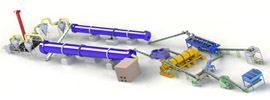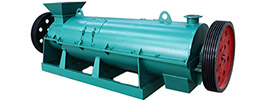Differences Between Organic Fertilizer Fermentation and Aging
1. Definitions and Phases
- Fermentation
- Definition: The core stage of organic fertilizer production, where microorganisms (aerobic or anaerobic) decompose organic matter, generating heat to eliminate pathogens, weed seeds, and other harmful substances.
- Phases:
- Primary Fermentation (First Stage):
- Duration: 10–12 days (windrow method) or 7 days (trough method).
- Temperature: Initial mesophilic phase (1–3 days, below 45°C), followed by thermophilic phase (50–65°C for 5–7 days), peaking at 70–80°C.
- Microbial Activity: Mesophilic microorganisms (initial) → thermophilic microorganisms (high-temperature phase) dominate.
- Secondary Fermentation (Post-Fermentation):
- Duration: 20–30 days or longer.
- Goal: Decompose recalcitrant organic matter (e.g., cellulose, lignin) not fully broken down in primary fermentation, forming stable humus.
- Aging (Curing)
- Definition: A stabilization phase after fermentation, where organic fertilizer undergoes natural or controlled conditions to further mineralize, stabilize, and reduce the risk of secondary fermentation.
- Phases:
- Duration: Weeks to months (depends on material and environment).
- Temperature: Gradually cools to ambient temperature, with significantly reduced microbial activity.
- Microbial Activity: Dominated by saprophytic microorganisms that decompose residual organic matter, forming stable structures.
2. Core Objectives and Functions
| Aspect |
Fermentation |
Aging |
| Primary Goal |
Decompose organic matter, sterilize pathogens, achieve harmlessness |
Stabilize humus, reduce secondary fermentation risk, enhance fertilizer safety |
| Key Roles |
- Produce small-molecule nutrients (e.g., organic acids, amino acids)
- Adjust C/N ratio to below 20:1
- Eliminate ≥90% pathogens |
- Reduce moisture (to <20%)
- Stabilize pH (6.5–7.5)
- Minimize odor and heavy metal activity |
| Product State |
Composted material, potentially unstable |
Highly stabilized, safe for direct application |
3. Process Parameters Comparison
| Parameter |
Fermentation |
Aging |
| Temperature Control |
High-temperature phase (50–65°C in primary fermentation), gradual cooling in secondary fermentation |
Low temperature (near ambient), no active control required |
| Turning Frequency |
Every 2–3 days during primary fermentation |
No turning; natural stacking |
| Microbial Activity |
Thermophilic microorganisms dominate (high-temperature phase) → mesophilic microorganisms active (late stage) |
Saprophytic microorganisms dominate, low activity |
| Timeframe |
10–30 days (primary + secondary fermentation) |
Weeks to months |
| Stability Metrics |
Maturity ≥80%, C/N ratio ≤20:1 |
Maturity ≥90%, C/N ratio stabilized at 10–20:1 |
4. Practical Relevance and Distinctions
- Interconnection:
- Fermentation is a prerequisite for aging, and aging consolidates the results of fermentation. Together, they ensure the maturity and safety of organic fertilizer.
- Unaged fermented products may undergo secondary fermentation due to residual active microorganisms, causing seedling burn or nutrient loss.
- Distinctions:
- Phase Nature: Fermentation focuses on decomposition and sterilization, while aging emphasizes stabilization and mineralization.
- Risk Management: Fermentation prioritizes harmlessness, whereas aging prioritizes stability.
- Product Use: Fermented material requires aging before safe application; direct use of unaged fertilizer may harm crops.
5. Summary
- Fermentation: A thermal decomposition process to eliminate harmful organisms, essential for producing qualified organic fertilizer.
- Aging: A post-fermentation stabilization treatment to ensure long-term storage and application safety, enhancing nutrient stability.
- Relationship: Complementary and indispensable. Fermentation provides the foundation for aging, while aging solidifies fermentation outcomes, jointly guaranteeing organic fertilizer quality.
 Send us a Email
Send us a Email Wulong Industrial Cluster
Wulong Industrial Cluster Have any question?
Have any question?


















